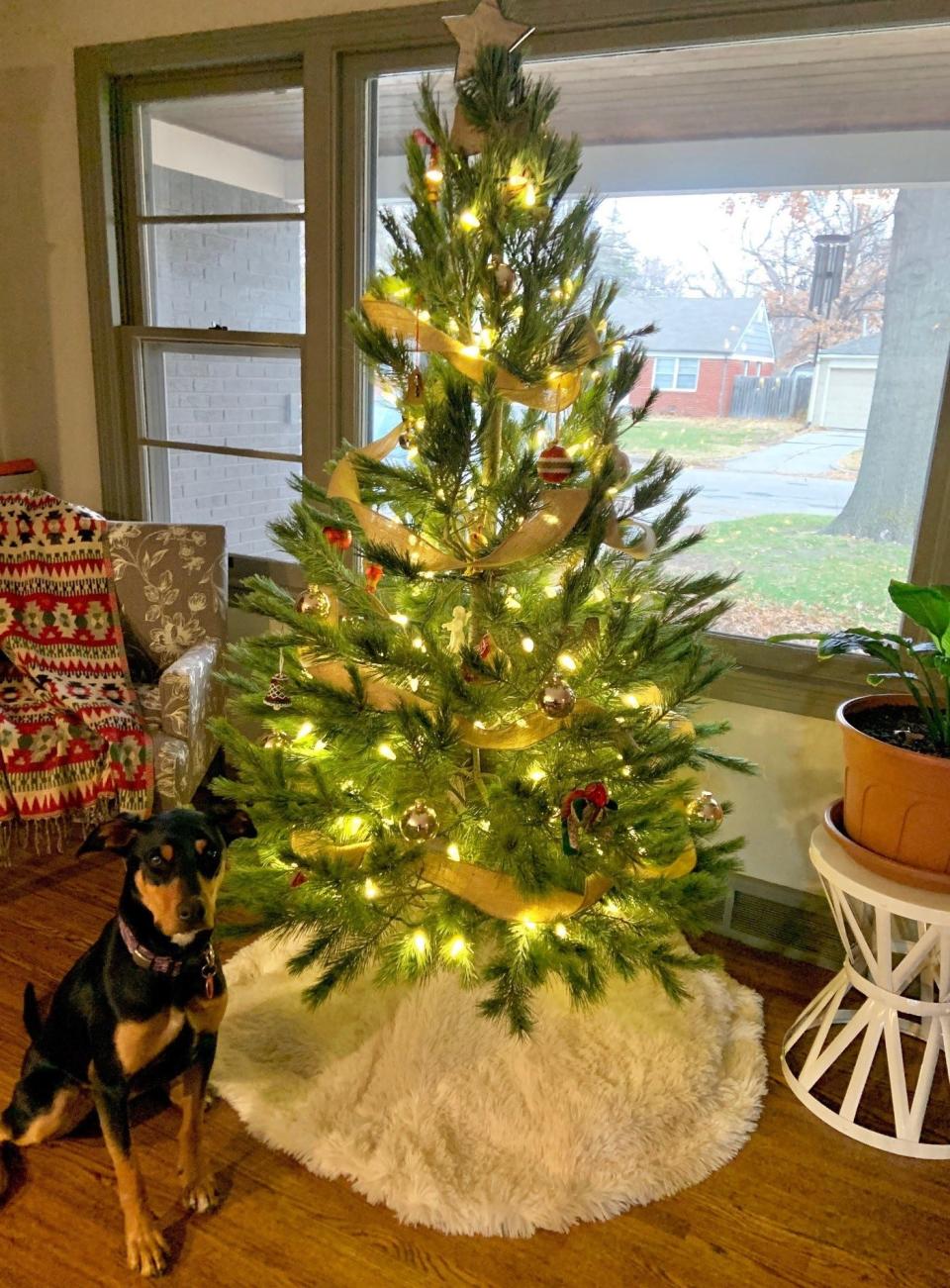Over the Garden Gate: Christmas tree dilemma: Real of fake?
As more and more people purchase artificial trees for their holiday decor, you might wonder why anyone would still want the real deal.

Artificial trees continue to grow in popularity, appearing more realistic all the time. They certainly look more lifelike than early models made of goose feathers or aluminum, and have come a long way since the 1930s when a British houseware company produced the first model made of brush bristles, the same kind they used to make toilet brushes!
The lower cost and convenience of artificial trees is appealing; nearly 80 percent of homes displaying a Christmas tree use a fake. They don’t require water, nor do they drop nearly as many needles from their perfectly symmetrical shape. However, there are several considerations to weigh when choosing what type of tree to put up this season.
Artificial trees are made from nonrenewable, petroleum-based PVC and metals, and use additional fuel to be transported long distances. (85% of artificial trees come from China!) Some imported trees are labeled with warnings for possible lead content.
A study by Ellipsos in Montreal found that consumers would need to use a fake tree for 20 years for it to be considered an environmentally friendly choice. Typically, Americans use an artificial tree for six years. Discarded trees end up in landfills and will never biodegrade, and recycling them is nigh on impossible with the various materials fused together.
On the other hand, the “green” of a live Christmas tree certainly goes beyond its color.
There are about 15,000 Christmas tree farms in the United States employing around 100,000 people. Pennsylvania alone has more than 1,400 farms (ranking third in the nation!) and sells about 1 million trees annually. Locally grown and purchased trees save fuel and transportation costs, create jobs, and keep dollars invested in the local economy.
The average time from planting to harvest of a Christmas tree is about seven years, with larger trees taking 10 to 15 years. During its lifetime, each tree will sequester one ton of carbon dioxide from the atmosphere. In the meantime, these acres ― about 500,000 of them ― offer habitats for a diversity of wildlife, produce oxygen and improve air quality.
Christmas trees are not cut down from the forest on a large scale ― 98 percent are grown on farms across all 50 states. Only about 10 percent of trees grown are harvested each year, and for each tree harvested, one to three seedlings are replanted. Many growers employ sustainable practices, though only about 1 percent are certified organic. Christmas trees rank on the low end of agricultural use of pesticides, using about a quarter of what is used on apples.
Tree farms provide vegetation along streams and ditches where they help contribute to healthy watersheds and wetland management. Christmas trees can also be grown on steep slopes and under powerlines, areas typically unsuitable for other crops.
At the end of the holiday season, trees can be placed temporarily near bird feeders to provide winter protection. They can also be chipped and recycled into mulch, sunk into ponds as fish habitat or used as wind and water barriers to limit erosion.
The selection of a live tree is a Christmas tradition for many families and can be as easy as stopping at a local sale site. Another option is to find and cut your perfect Christmas tree at a nearby farm. These adventures are the makers of childhood memories and stories for a lifetime. Visit the Pennsylvania Christmas Tree Growers Association to learn more about where you can find locally grown trees at www.christmastrees.org.
If you’re looking for a sustainable option, you could even go a step further than a cut live tree and purchase a tree with the root ball intact that can be planted in your yard. Remember, though, that in Pennsylvania, cold weather makes planting a tree in the winter difficult and survival questionable. For this option, the tree needs very limited time in a dry, heated house, plus a pre-dug hole with thawed dirt to backfill to complete the task as soon as possible.
More green tips for your live tree: Spray it with water before bringing it inside to remove dust and allergens; water frequently; keep it away from heat sources; never leave it illuminated when you aren’t home; use LED lights over incandescent; and remember to always recycle the tree after the holidays.
Martha Murdock is a Master Gardener with Penn State Extension – Beaver County.
This article originally appeared on Beaver County Times: Over the Garden Gate: Real Christmas trees offer many positives for environment

